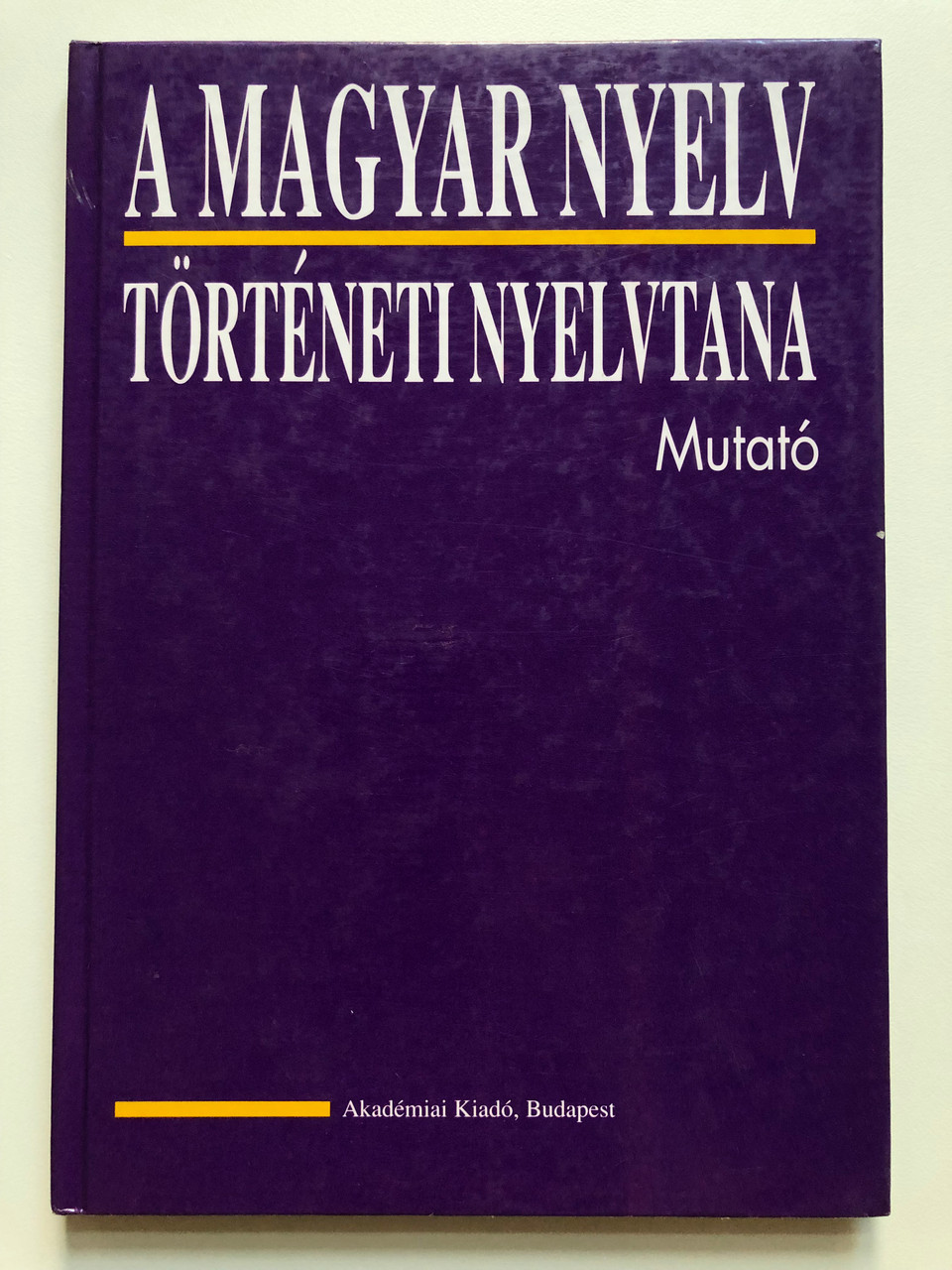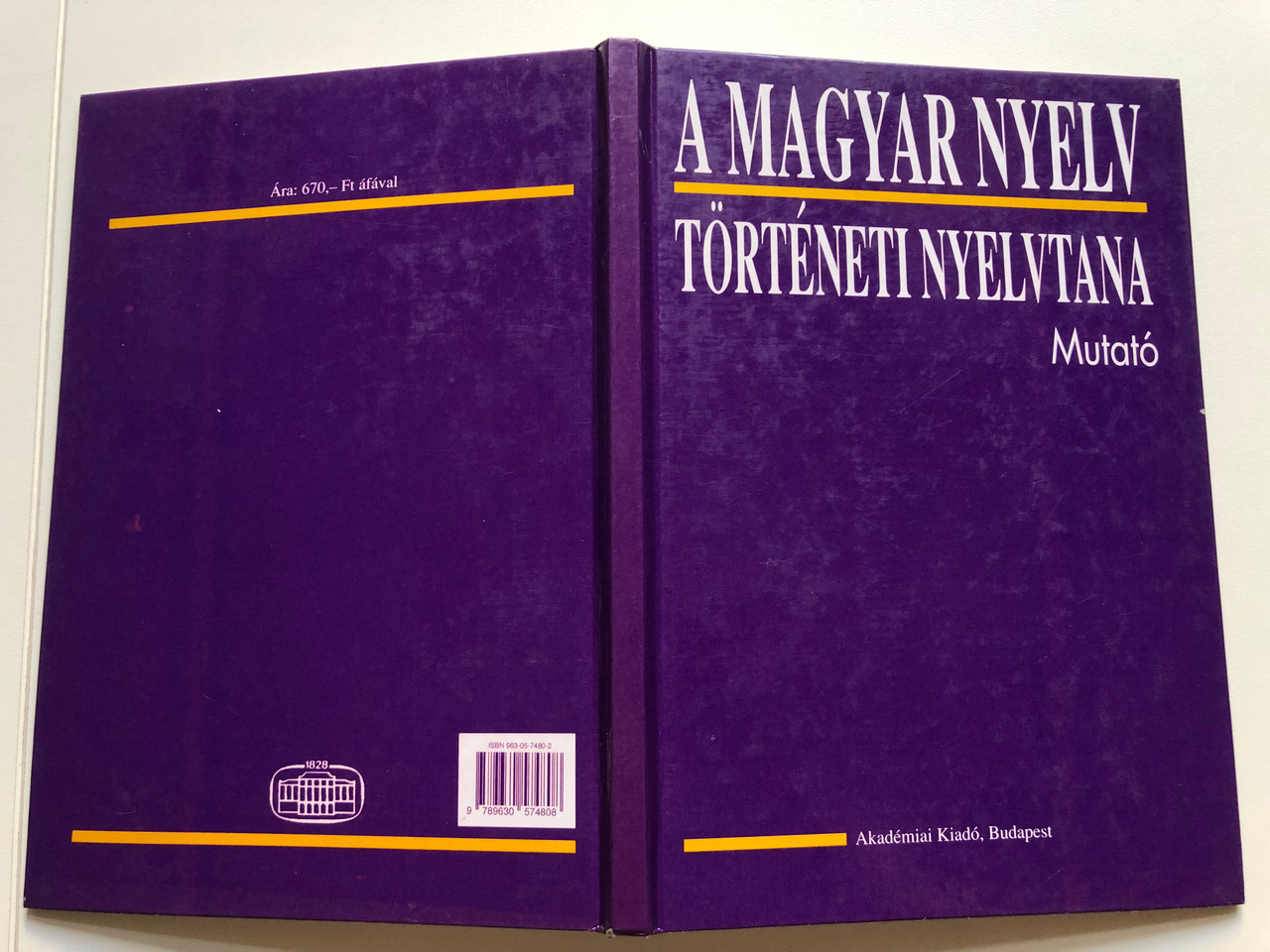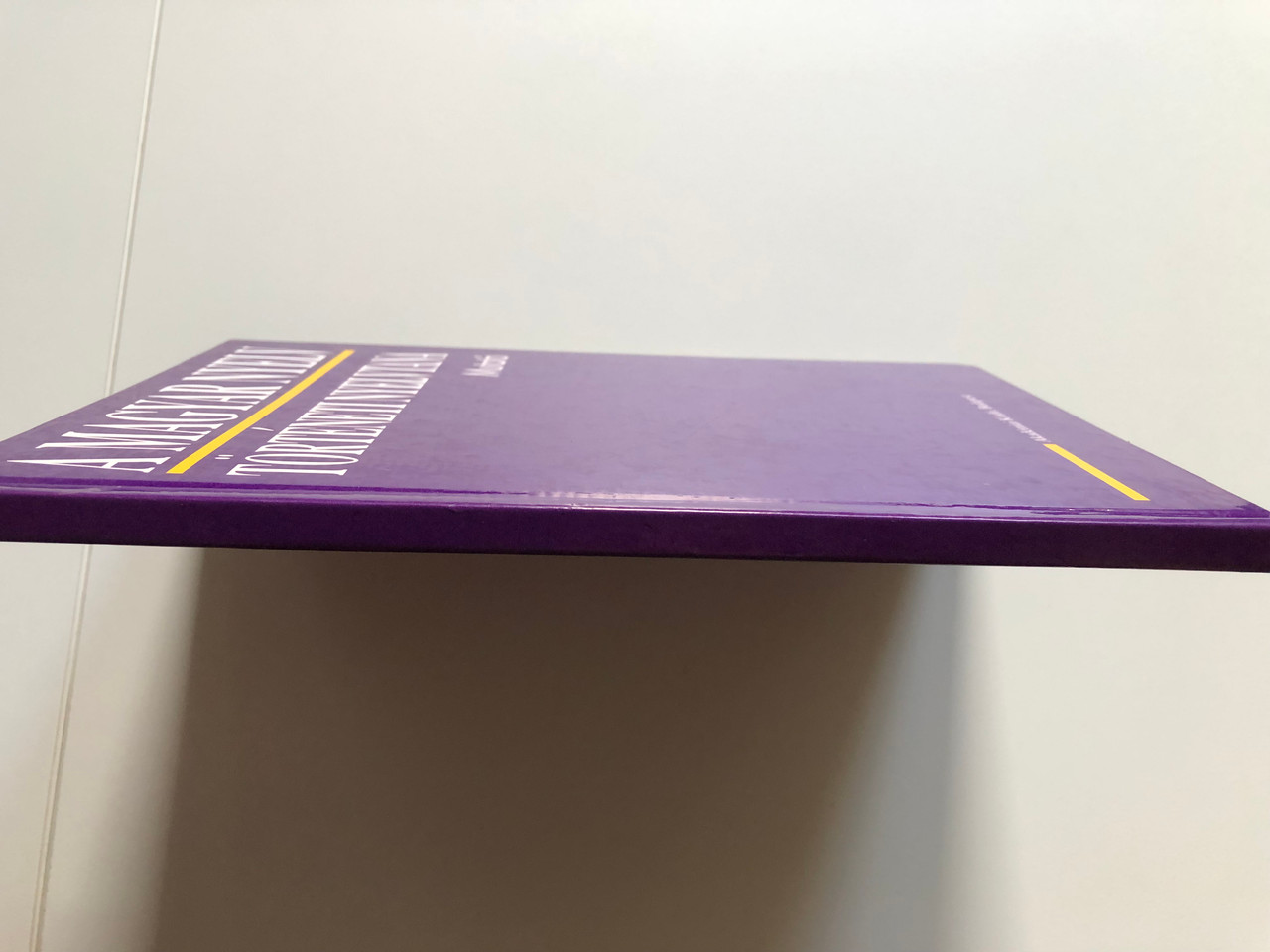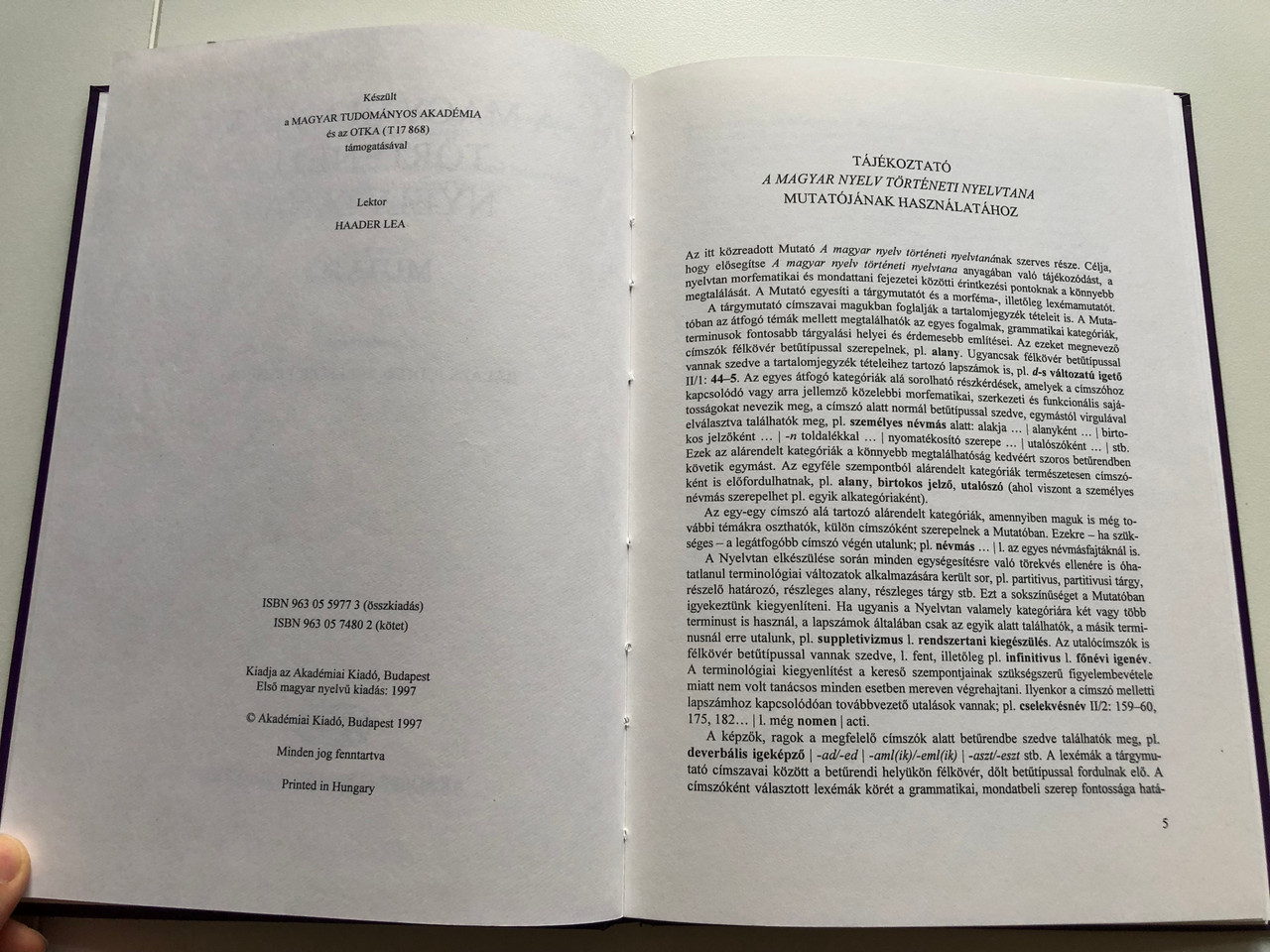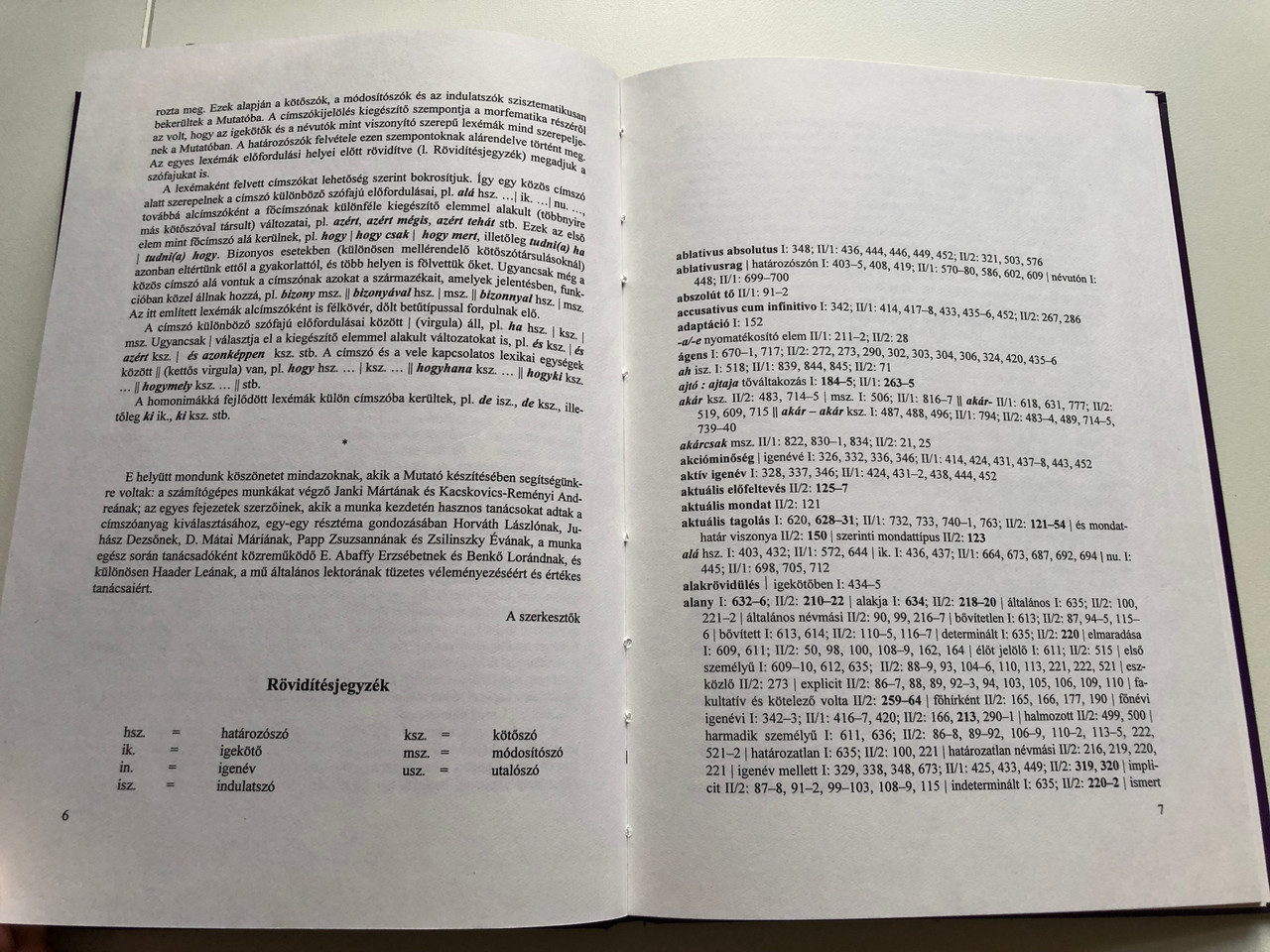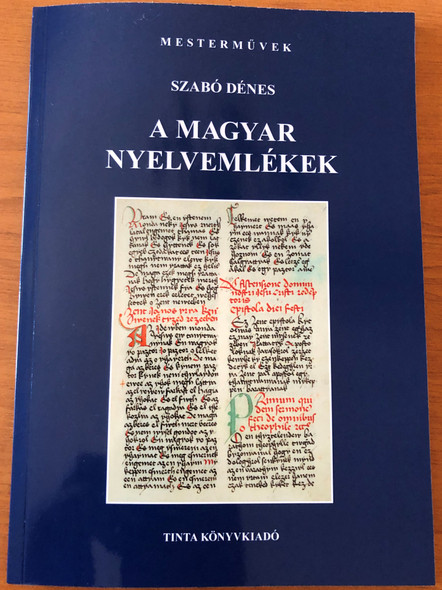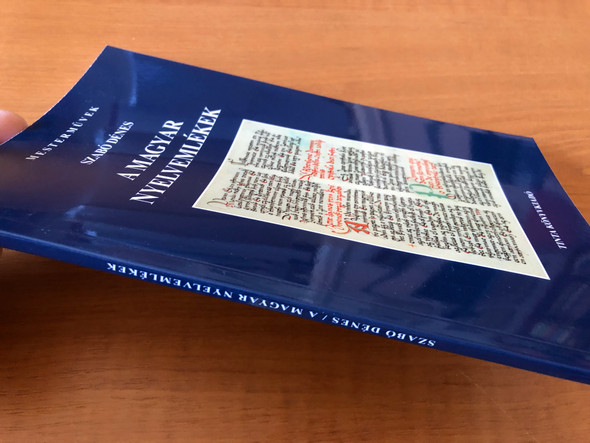Description
Szerkesztette BALÁZS JUDIT és ZELLIGER ERZSÉBET / AKADÉMIAI KIADÓ, BUDAPEST / First edition in Hungarian: 1997 Academic Publishing House, Budapest
UPC: 9630559773
- Language : Hungarian
- ISBN-10 (release) : 9630559773
- ISBN-10 : 9630574802
The Index published here is an integral part of the historical grammar of the Hungarian language. to help you The historical grammar of the Hungarian language is materially rich, and the points of contact between the morphematic and syntactic chapters of the grammar are lighter than metal. The Muta
in addition to the overall topics, there are more important discussion points and more worthy mentions of individual concepts, categories, and terms. The names of these cooks are listed in bold, e.g. subject. The page numbers belonging to the items in the table of contents are also blind typed, e.g. the variant get 11: 44-5. The sub-questions that can be classified under each general category, which name the closer morphematic, structural and functional features that correspond to or characterize the heading, can be found under the heading in normal font, separated from each other by commas. e.g. under a personal pronoun: its form as a subject... as a possessive marker... as an emphatic role with a suffix... as a referent... etc. These subordinate categories follow each other in close order to make them easier to find. Categories that are subordinated from one point of view can of course also occur without tags, e.g. subject, possessive adjective, referent (where the personal pronoun can appear, e.g. in one of the subcategories)
The subordinate categories under each heading, if they themselves can be divided into further topics, are listed as separate headings in the Index. If it is professional, we refer to these at the end of the most comprehensive heading; e.g. pronoun... 1 also for each pronoun type.
During the preparation of the Grammar, despite all efforts to unify, terminological variants were inadvertently used, e.g. partitive, partitive object. participle adverb, partial subject, partial object, etc. We tried to balance this multiplicity in the Index. If the Grammar uses two or more terms for a category, the page numbers are usually only found under one of them, we refer to it for the other term, e.g. suppletivism 1. systematic addition. The reference words are also written in folk bold type, L. above, or e.g. infinitive L. genitive participle.
Hungarian Description:
Az itt közreadott Mutató A magyar nyelv történeti nyelvtanának szerves réelja. hogy elösegitse A magyar nyelv történeti nyelvtana anyagihan valin tjekordas, a yelvtan morfematikai és mondattani fejezetei közötti érintkezési pontoknak könnyebb metallist A Mutató egyesiti a tárgymutatót és a morfema, illesleg lestmamutató A tárgymutató cimszavai magukban foglalják a tartalomjegyzék telet is. A Muta
sóban az átfogó témák mellett meg az egyes fogalmak, kai kategorik, terminusok fontosabb tárgyalási helyei és érdemesebb emlitései. Az ezeket megnevez cook félkövér betütipussal szerepelnek, pl. alany. Ugyancsak felköver bettipussal vak szedve a tartalomjegyzék tételeihez tartozó lapszámok is, pl. a változatú get 11: 44-5. Az egyes átfogó kategóriik alá sorolható részkérdések, amelyek a címszóhoz Lapcsolódó vagy arra jellemzó közelebbi morfematikai, szerkezeti és funkcionális sajá tosságokat nevezik meg, a címszó alatt normál betütipussal szedve, egymástól virgulával elválasztva találhatók meg. pl. személyes névmás alatt: alakja alanyként... birto- kos jelzöként... toldalékkal nyomatékosító szerepe... utalózóként... stb. Ezek az alárendelt kategóriák a könnyebb megtalálhatóság kedvéért szoros betürendben követik egymást. Az egyféle szempontból alárendelt kategóriák természetesen cimszó- kent is előfordulhatnak, pl. alany, birtokos jelző, utalószó (ahol viszont a személyes névmás szerepelhet pl. egyik alkategóriakent)
Az egy-egy címszó alá tartozó alárendelt kategóriák, amennyiben maguk is még to- vábbi témákra oszthatók, külön cimszóként szerepelnek a Mutatóban. Ezekre-ha szak- séges-a legátfogóbb címszó végén utalunk; pl. névmás... 1 az egyes névmásfajtáknál is.
A Nyelvtan elkészülése során minden egységesítésre való törekvés ellenére is dha- tatlanul terminológiai változatok alkalmazására került sor, pl. partitivus, partitivusi tárgy. részelő határozó, részleges alany, részleges tárgy stb. Ezt a sokszinüséget a Mutatóban igyekeztünk kiegyenlíteni. Ha ugyanis a Nyelvtan valamely kategóriára két vagy több terminust is használ, a lapszámok általában csak az egyik alatt találhatók, a másik termi- nusnál erre utalunk, pl. suppletivizmus 1. rendszertani kiegészülés. Az utalócimszók is folkövér betütipussal vannak szedve, L. fent, illetőleg pl. infinitivus L. fönévi igenév.
























